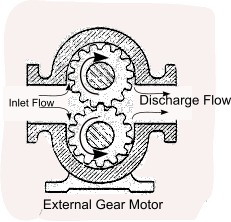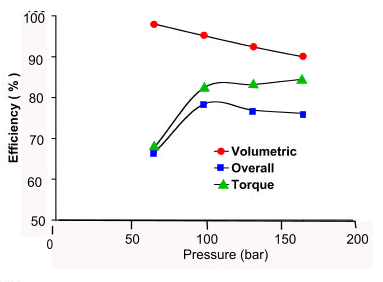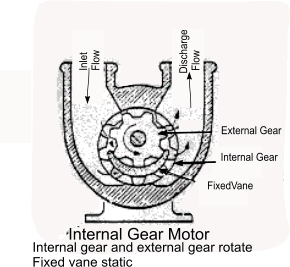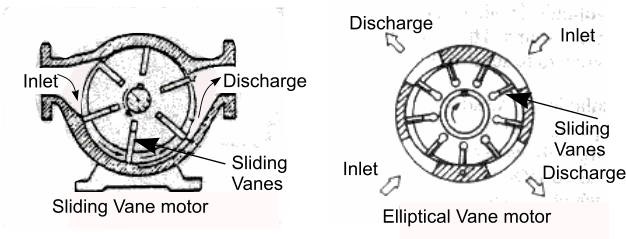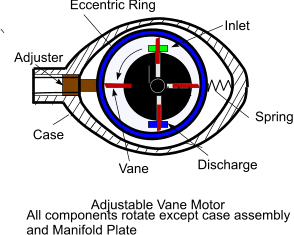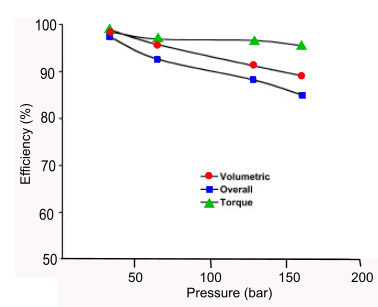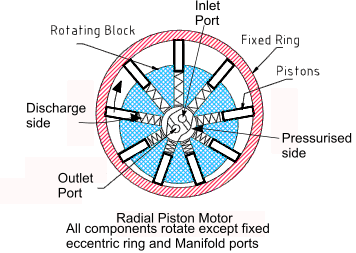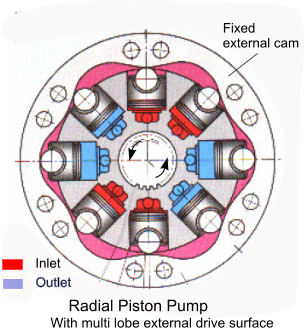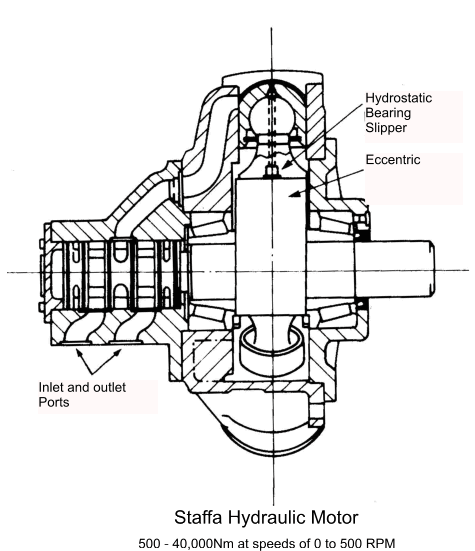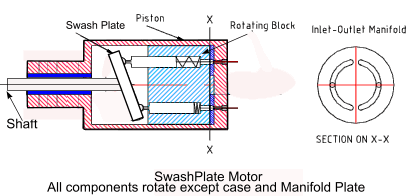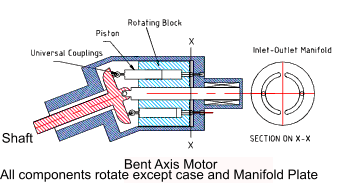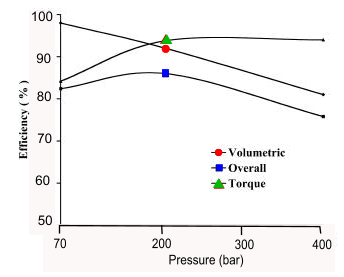Hydraulics Index
Hydraulic Motors
These notes include basic descriptions the following types of hydraulic motors
|
External Gear motor Internal Gear motor Sliding Vane motor |
Radial Piston Pump SwashPlate Piston Pump Bent Axis Piston Pump Summary Table |
|
Introduction Below are identified various types of positive displacement motors with notes identifying
operating information. These notes and sketches are rudimentary in nature and are provided to show
the principles involved in the designs. For detailed notes on the design and performance it is advised
the the manufacturers literature is referenced. Basic Calculations relating motor fluid flow, power and, shaft torque are found on my webpage. Hydraulic Calcs External Gear Motor
The motor includes two gears one gear is includes the drive shaft. The motor
bearings are generally provided with internal bearings and packed glands or mechanical
seals. The most popular gear types are straight spur. These can be
noisy and subject to vibration if they are not manufactured to high standards.
Internal Gear Motor The pump is based on an external gear located within, and meshing with, a larger internal gear.
A crescent vane is included to seperate the inlet volume from the discharge
volume between the two gears. The hyddraulic fluid enters enters the inlet volume and the pressure
tend to expand the volume which results in the gears rotating. At a certain point in the rotation the
volume is connected to the outlet port and as the gears continue to rotate the fluid is force out to the discharge route.
the.
Sliding Vane Motors The vane motor includes a ring mounted inside a cylindrical case The ring
includes a number of radial slots in which are located sliding vanes. The ring
is mounted eccentric to the case and the vanes are designed to press against the inside
wall of the case. The vanes are forced against the wall by hydraulic pressure or
spring force or due the centrifugal force resulting as the ring is rotated.
The principles of the adjustable displacement vane type hydraulic motor are illustrated in the sketch below
Piston Motors General Notes The motors are extensively used for power transfer applications in the off shore ,
power transmission , agricultural, aerospace and construction industries,.. to list just a few.
All of these motors work on a similar principle. Radial Piston Motor. Radial Piston motors include a rotating cylinder containing equally spaced radial pistons
arranged radial around the cylinder centre line. A springs pushes the pistons
against the inner surface of an encircling stationary ring mounted eccentric to the cylinder.
The fluid flow at pressure causes the pistons to move out,resulting in rotation, for half of a revolution
and the pistons move in ,driving the fluid out
during the other half. The greater the ring eccentricity the
longer the pistons stroke and the less the rotation speed per unit fluid flow rate.
A variation of the radial piston motor is the Staffa motor as shown below. For this type of motor the radial pistons are arranged in the outer case and move against an eccentric section of the rotating shaft. This motor is produced in a number of sizes enabling high torques at low speeds.
Swashplate Motors. Swashplate motors have a rotating cylinder containing parallel pistons arranged radially around the cylinder centre line.
A spring pushes the pistons against a stationary swash plate located at one end of the cylinder ,
which sits at an angle to the cylinder. The fluid pressure causes the pistons to move out during half a revolution and
pistons drive the e fluid out
during the other half. The greater the swashplate angle relative to the cylinder centre line the
longer the pistons stroke and the less the rotation speed per unit fluid flowrate.
Bent Axis motors. Bent axis piston motors have a rotating cylinder containing parallel pistons arranged radially
around the cylinder centre line. The pressure in the fluid causes the pistons to reciprocate over a stroke
based on the relative angle of the shaft and cylinder. The motion of the pistons results in the rotation of the shaft.
The cylinder is driven by an shaft which is arranged at an
angle to the cylinder axis. The shaft includes a flange with a mechanical connection to each
piston. The greater the angle of the cylinders to the shaft axes the
longer the pistons stroke and the less the rotation speed per unit fluid flowrate.
Summary Table
|
Useful Links
|
|
Hydraulics Index
